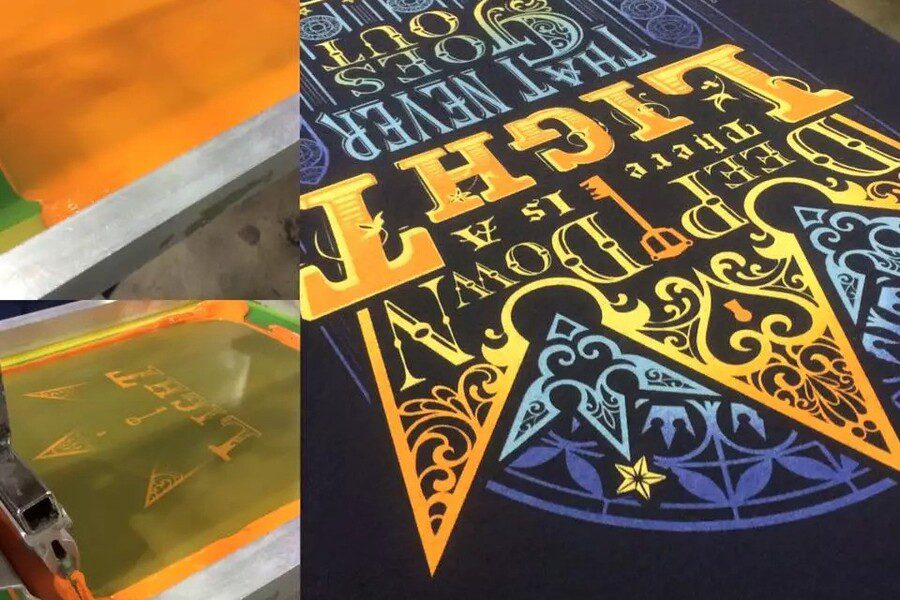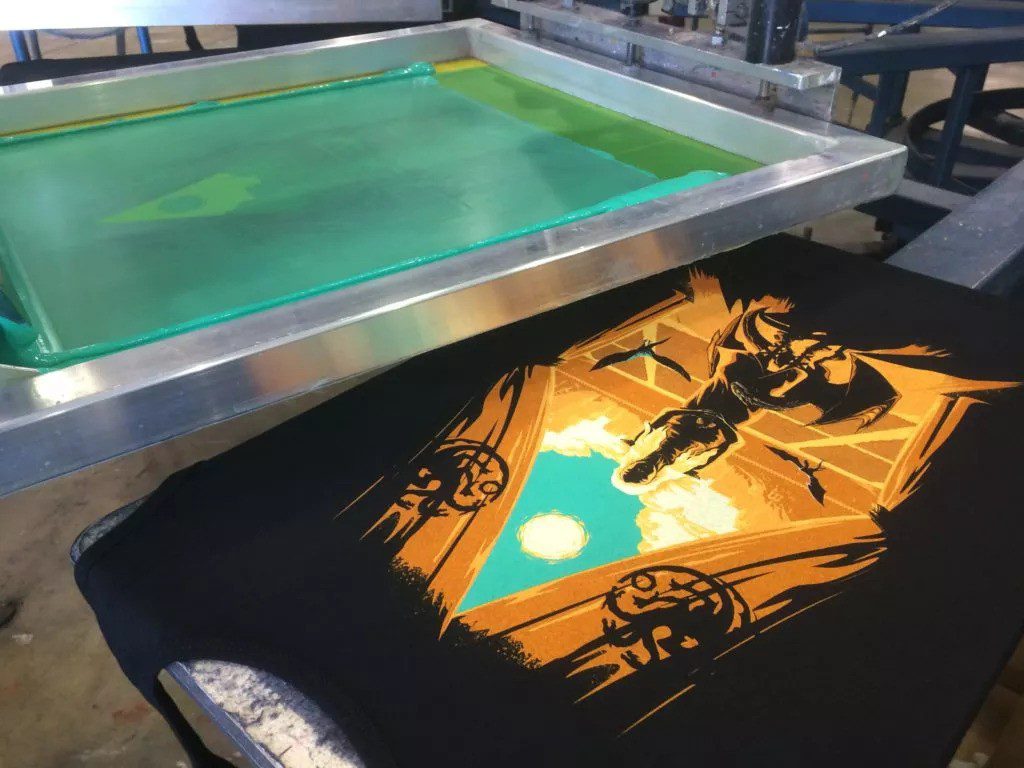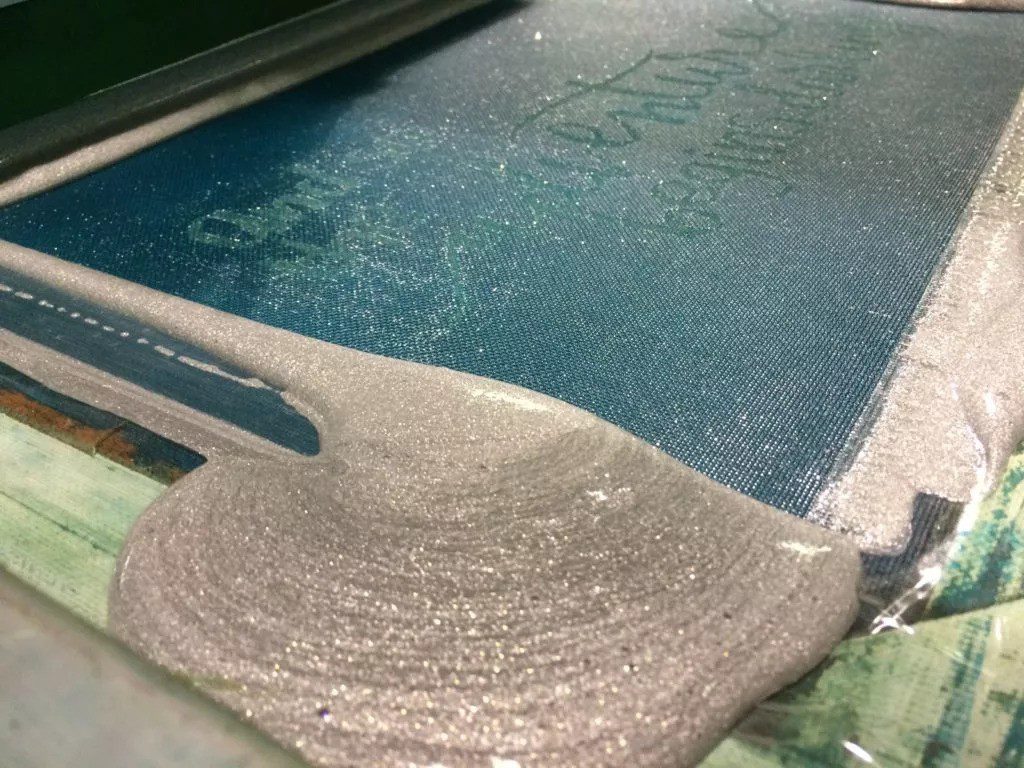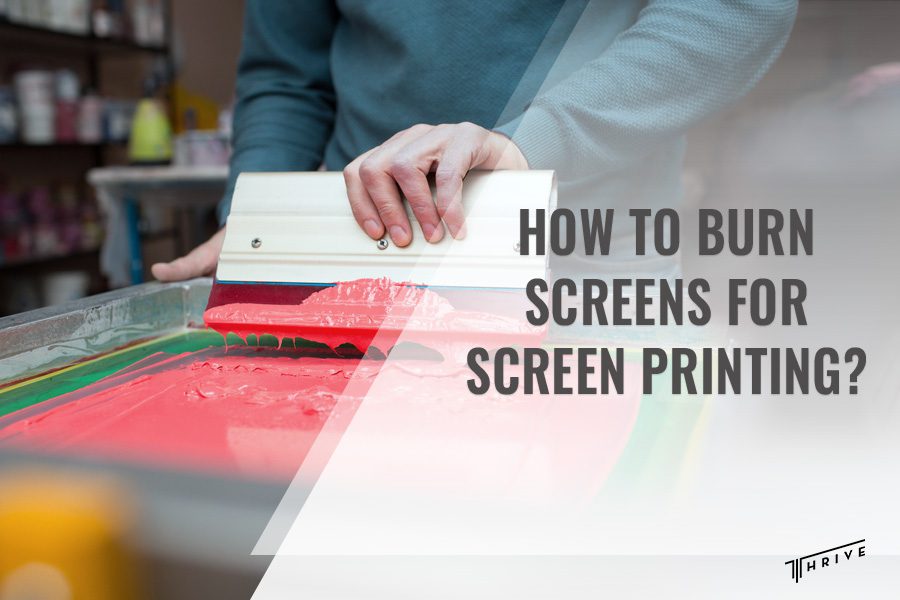Screen printing, also known as silk screen printing, is a unique and extremely versatile printing method that involves pushing ink through a stenciled mesh screen that’s placed above a garment. The screen is prepared through a delicate process of emulsion exposure to create open areas, completing the stencil and allowing ink to pass through. However, burning screens is a critical part of the screen printing process and is responsible for creating high-quality prints. But how to burn screens for screen printing and what’s the process?
The precision and accuracy of screen burning influence the sharpness, quality, and clarity of the final print design. It’s an essential skill all printing industries must possess in order to create professional and consistent results in the screen printing process. Unificent burning may result in a lack of detail and undefined shapes in the completed prints.
In this article, we’ll elaborate on why proper screen burning is important and the precautions that need to be considered before indulging in such activities. Discover a complete guide on screen printing how to make a screen as we explain in detail each step of the process.
Why is Burning Screen Necessary
Essentially, the process of screen burning involves coating a screen with emulsion and exposing it to a light source over a transparency with the film facing the light. An appropriate exposure time will ensure the emulsion is accurately exposed to the design, allowing a precise replication.
Improperly burning a screen and any errors that may occur during the process can lead to various complications, such as overexposure or underexposure, causing a compromised print quality. In order to get a professional screen printing execution, you’d need to know how to get a proper, consistent, and well-exposed screen burn. That’s why we’ve provided you with a guide on how to burn screens for screen printing so you can learn more about the precision and expertise this process requires.

Precautions Before Burning Screen for Screen Printing
Besides safeguarding yourself throughout the journey, it’s vital to take several precautions and considerations before burning your screen. As they may affect your screen’s exposure time, understanding these factors can ensure consistent and uniform prints. Here’s a brief explanation of each of them:
Emulsion used
The first precaution you need to be aware of before burning your screen is the type and amount of emulsion you use. Normally, you would need to coat the screen with emulsion, and there are three types of emulsion, each offering diverse characteristics and exposure times. This includes:
- Diazo emulsion – this emulsion is the cheapest option for burning screens, and it gets its name since Diazo powder must be added to the entire base before use. However, this emulsion requires longer exposure time but is the most forgiving if under or overexposed occurs.
- Presensitized – unlike Diazo, this emulsion is pure Photopolymer and is extremely sensitive with much faster exposure time. They need to be handled carefully, as they’re highly sensitive to even sunlight on cloudy days.
- Dual-cure emulsions – these emulsions combine the best features of both Diazo and Photopolymer emulsions. While they have considerably faster exposure time than Diazo, they aren’t as sensitive as photopolymer emulsions.
Light source
The choice of a light source, which plays a critical role in activating the photosensitive emulsion on the screen, can significantly influence the screen burning process in screen printing. Depending on the exposure unit, the type and placement of the light source offer different outcomes.
The wavelength and intensity of the exposure unit influence the exposure time for the emulsion to properly harden. Additionally, placing the light closer to the screen translates to shorter exposure time, and positioning it higher prolongs the process.
Screen mesh count
Before burning your screen, it’s essential to consider the screen mesh count, as it can influence the overall outcome and quality of your prints. The mesh count refers to the number of openings caused by threads of mesh crossing per square inch of the screen, determining the level of detail and ink deposit in the final product.
Lower mesh screens have wider openings than higher mesh screens, making them suitable for bold and simple prints. This means that they hold more emulsion in their openings, but this results in longer exposure time requirements.
Underexposure and Overexposure
In order to achieve a perfect screen burn, you should know what underexposed and overexposed screens look like.
Underexposure can cause scums, pinholes, and sawtooth marks on your print. It results in sections that aren’t part of the design being washed away. On the contrary, overexposed screens can make it hard for you to wash out the unexposed areas. This may result in undercutting, where the design shrinks around the edges or even gets blurry.

How to Burn Screens for Screen Printing
Now that the essential factors are covered, we’ll walk you through the process of burning screens for screen printing. Following this step-by-step guide on how to burn screens for screen printing at home will help you create the perfect stencil for high-quality designs and prints.
Prepare your screen
Properly preparing screens before the burning process with degreasing is vital for achieving optimum results. The degreasing process will remove any oils, dust, or residues that may affect the emulsion’s photosensitive properties.
This step is typically done with specialized screen cleaning solutions that ensure a receptive surface for emulsion application. Inadequate screen preparation may result in a pinhole or fish-eye effect on your final prints.
Emulsion coating
Once your screen is clean and dry, coat the screen with activated emulsion using a squeegee. Wearing protective gloves, pour a few tablespoons worth of emulsion and spread a thin layer over the screen. Remove all excess emulsion using a squeegee on all sides, ensuring your emulsion is as thin and evenly coated as possible.
Next, you’ll want to lean the coated screen in a dark room, making sure nothing is touching the wet area, and no light is exposed to the screen. This will ensure the emulsion properly dries and hardens. It may take a few hours to do so, but you can speed this up using a fan.
Burning the screen
For the next step, you’ll need a prepared stencil of your desired image on a transparency, typically in black ink, the coated screen, black fabric, light source, and foam.
Set the foam directly under the light and the black fabric on top. Once your screen is dry, place the screen on top of this and carefully position the transparency onto the coated screen, securing it with clear tape. After everything’s in place, you can turn on the light source, exposing the screen to UV light.
While there are instructions that come with the emulsion, the exposure time is dependent on the emulsion used, screen mesh count, and thickness of the stencil. Once the screen is burned, you can return to normal lighting.
Washing screen
Take your screen in a sink, spray it with cool water on both sides and let it sit for 30 seconds. Wash the screen until all the emulsion is removed where your transparency blocked light. This can take 2 to 5 minutes or more, so make sure you’re as thorough as possible. You should be able to see through the areas where ink will pass through. Once you’re done, let the screen completely dry before putting it to use.

Conclusion
In conclusion, considering the precautions and carefully preparing before burning screens is critical to ensure a successful and safe operation. Ensuring precision and accuracy in the burning process, using high-quality emulsions, and controlling the exposure type are vital to achieve uniform screens.
Using the right screen printing equipment and taking time to properly coat, expose, and dry the screens will ultimately influence the overall quality of your prints. Hopefully, this article has helped you learn more about how to burn screens for screen printing and helped you understand the meticulous process that goes into this technique.

Robert Fisher is the founder and CEO of Thrive Screen Printing and brings extensive experience in the screen printing and fulfillment industry.


